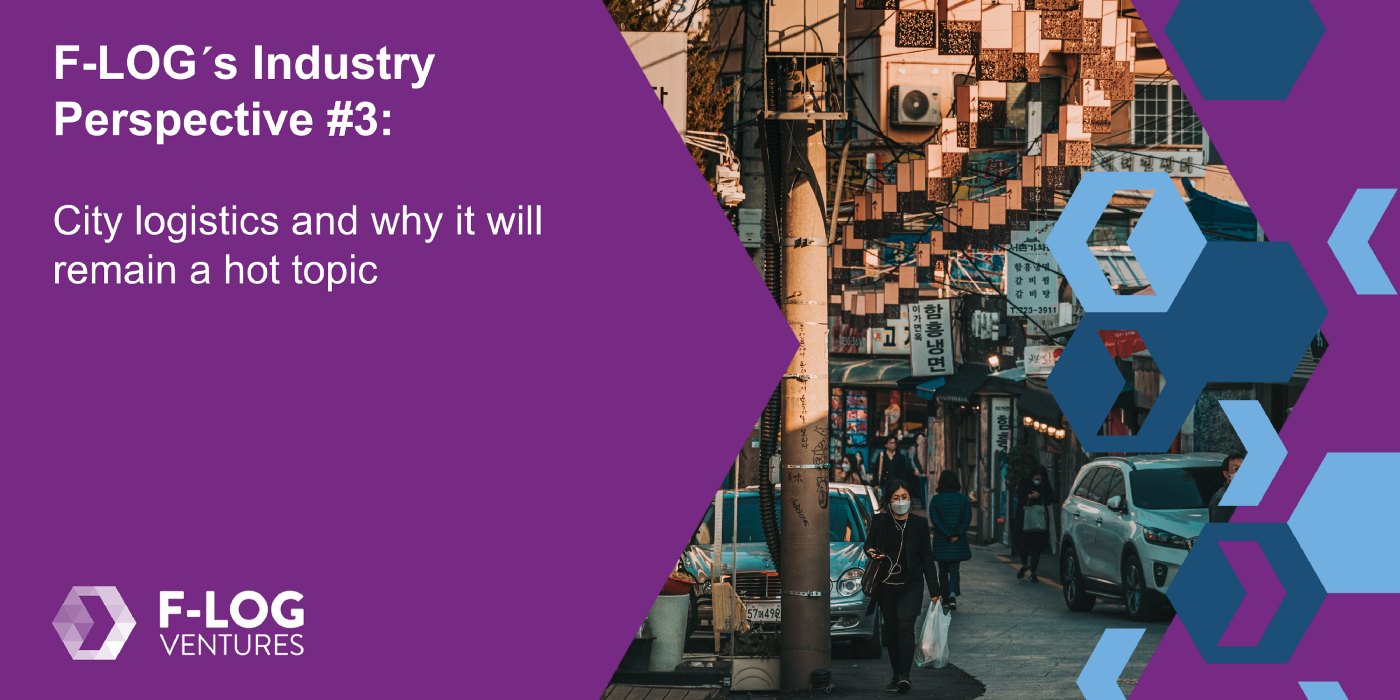For many e-commerce firms it has always been essential to be close to big cities and metropolitan areas. With the goal of wanting to improve logistics within the city, more startups and investors are expected to reallocate capital to urban logistics and decentralized fulfillment solutions.

But is city logistics really that special? Yes, it is!
Why? Last mile delivery, especially within inner cities, is the most inefficient step of the entire supply chain, 61% of surveyed logistics companies say. This is also because it is the most expensive part of the supply chain, taking up a 53% share in the shipping costs. So, let’s talk city logistics.
By definition, city logistics refers to the distribution of freight in urban areas. With demand growing for both a service economy and life in urban areas, cities are challenged to provide more frequent and customized deliveries. More specifically, urban goods movements utilize around 20% to 30% of kilometers driven in the metropolitan area.
City logistics is a playing field that differs strongly from other areas — especially when it comes to logistics. Looking at supply chains, logistics mostly takes place in surroundings that are specifically created for the handling, storage, and transportation of goods. These surroundings are designed by logistics experts. As soon as logistics enters the city, this is no longer the case. In fact, logistical requirements are often neglected in urban planning.
And why is it such a complex concept?
- Software requirements: The city is the place where outdated B2B logistics software will meet the highest UX-related expectations of consumers. Studies show that 56% of consumers would not buy a brand again if they were not satisfied with the shipping service. This state-of-the-art customer experience can only be achieved when the software used by last mile logistics providers and retailers allows a smooth and steady communication with the recipient. As the systems used to date are technologically outdated in most cases, the key enabler of such experiences is missing.
- Process flexibility: Additionally, it is important to remember that the consumers developed more personalized and flexible service requirements throughout the last years. The delivery should be as convenient as possible, such as, for example, having the possibility to choose a specific time window for delivery of the order even though the parcel is already on its way. This complicates the processes for the company while the technology behind such processes becomes even more relevant.
- The number of powerful stakeholders: Inner-city logistics constraints are being defined at all levels. Not only by the European Commission, whose low emission zone policy is becoming more and more stringent, but also the cities themselves restrict the access of transport vehicles.
- The high density and diversity of competitors: Borders between CEP giants, food delivery services and innovative last-mile service providers are increasingly blurred (as can be seen when looking at Delivery Hero’s Germany come-back in the quick commerce market) as core competencies widely overlap.
- Hardware-related requirements: Scooters would struggle to deliver furniture, but neither are more trucks a solution either. Last-mile robots and drones are not only facing physical challenges posed by curbsides, lampposts, and cables, but also legal frameworks. For this reason, the most practical application of UAVs and other robots is still in the pilot phase.
Major VC investments in city logistics
A small tour of the more recent venture capital (VC) history in city logistics shows us that a lot has happened. Makers of semi and fully autonomous last-mile vehicles (e.g., Starship, Nuro) from all over the world receive billions in funding every year. Restaurant delivery startups like Takeaway became grown-ups a decade ago already. Those who deliver food and consumables instantly from their own micro warehouses — known as flash supermarkets — are the latest VC hype with hundreds of millions in VC funding for Gorillas, Flink, and others in only a few months. Both Gorillas and Flink were founded in Berlin at the end of 2020 and since have raised US$1.3 billion and US$304.2 million in total respectively. And even if we look at mobility as logistics’ partner in crime, micro mobility such as ride hailing, scooter and unmanned aerial vehicle (UAV) startups, e.g. drones, have been VC targets for a long time.
Despite all this funding, we are convinced that in Europe, city logistics has yet to live up to its full potential!
… and why it will remain a hot topic
From our point of view, some “white spots” in the urban area that are ready to be revolutionized include:
- Delivery service orchestrators: Who will find the solution that succeeds in reducing the number of vehicles of different service providers that cover the same routes every day? Pilots such as the Berlin KoMoDo project, in which Germany’s key CEP service providers (DHL, DPD, GLS, Hermes and UPS) collaborate by sharing city hubs, show the great potential of a joint effort. However, the digital concept breaking the established industry logic is still missing.
- Micro hub network operators: Who will succeed in decentralizing fulfillment infrastructures in a way that brings the new standard of instant and highly flexible delivery to product groups other than food? Initial investments by VCs indicate the new wave. However, the winning business model is yet to be found. Will it be the B2B service provider with innovative last-mile infrastructures and services — the “Gorillas for non-food retailers” — building a proprietary B2C marketplace brand? Or someone else?
- Retail connectors: Who will convincingly connect local retailers with the last mile for them to run a true omnichannel business? Are ship-from-store startups scalable? And do they offer potentially strong margins?
- Returns champions: Who will design the desperately awaited solution that takes the pain out of collecting, processing, and redistributing e-commerce returns in an environmentally friendly, convenient, and efficient way? Can business models that became huge in the U.S. succeed in Europe too?
- Crowd enablers: There should be ways to involve the crowd in last mile logistics. What is common across all Asian and South American regions has yet to take off in many European countries.
When talking about new LogTech business models, cities are the melting pot for cutting-edge technology-, hardware-, and consumer-driven requirements in logistics. These requirements are key to innovative concepts coming up in the future. VCs should be prepared and keep an eye on city logistics.



